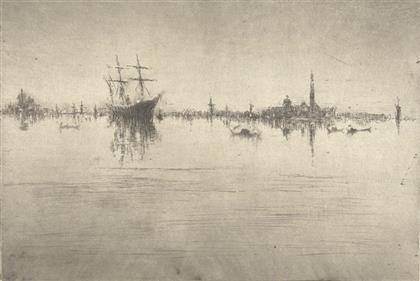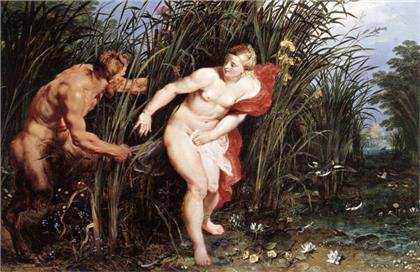
James Abbott McNeill Whistler, Nocturne, from the First Venice Set, 1879–80. Etching and drypoint on wove paper, 8 7/8 x 12 1/2 in. (22.5 x 31.8 cm). Yale University Art Gallery, Gift of Leonard C. Hanna, Jr., Class of 1913
Whistler’s etchings at Yale University Art Gallery ‘Whistler in Paris, London, and Venice’ examines the life and artistic development of James Abbott McNeill Whistler (1834–1903), through his earliest and innovative sets of etchings, the so-called French, Thames, and Venice Sets. Yale University Art Gallery: January 30–July 19, 2015.]]>
Source: Yale University Art Gallery
The sets are representative of three important periods in Whistler’s life: as a student in Paris, absorbing the lessons of his Realist contemporaries and the Old Masters; as an emerging artist in London, forging a name for himself as an etcher; and as a wellknown artist and teacher in Venice, trying to recover his reputation and fortune following a devastating bankruptcy. Over 100 objects from the Yale University Art Gallery’s permanent holdings, including etchings of Venice by Mortimer Menpes, one of Whistler’s most devoted pupils, and several lively works by Whistler’s contemporaries Édouard Manet, Francis Seymour Haden, Childe Hassam, and Joseph Pennell, are joined by more than a dozen works from the collection of the Yale Center for British Art, providing further perspective on Whistler’s life and influence.
“It is splendid that the Gallery’s first exhibition of Whistler’s art will not only focus on his three superlative series of etchings, made in Paris, London, and Venice—some from our own collection and others generously lent by the Yale Center for British Art—but will also greatly sharpen and deepen our understanding of the artist by illuminating the very different circumstances under which he made each of these famous sets,” states Suzanne Boorsch, the Robert L. Solley Curator of Prints and Drawings.
Heather Nolin, curator of the exhibition, expands on this: “Most audiences, when they think of Whistler, likely bring to mind the large painted portrait of his beloved mother, Anna. Yet, it was Whistler’s etchings that first made him famous, and they remain central to understanding his genius and enduring legacy,” states Nolin. “Whistler had a keen aesthetic sense, and found beauty in the unlikeliest of places, such as the seedy docklands along the Thames River. Even places already renowned for their beauty, such as the city of Venice, were transformed by Whistler into more breathtakingly sublime versions of themselves. His genius combined natural artistic abilities and an eye for form and composition with technical virtuosity in etching and printing.”
Related content
An American in London: Whistler and the Thames (exhibition, 2014)
Follow us on:


